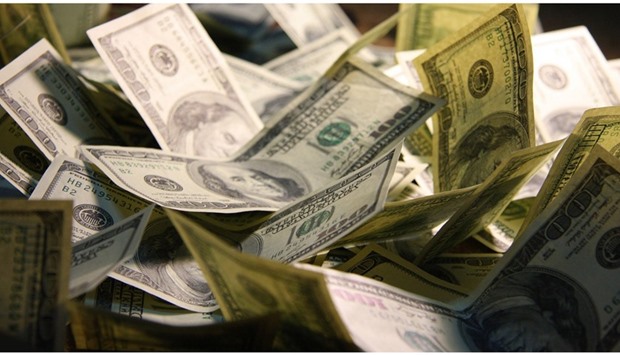The dollar’s downturn is a sign investors are losing faith in the ability of world’s last remaining growth engine to keep the global economy afloat.
The US currency fell for a third month, the longest stretch since before it embarked on two-year, 20% rally in July 2014. Growth in the world’s biggest economy slowed to a 0.5% annual rate in the first quarter, and economists have slashed the forecasts for this year to 2% from 2.5% in December.
As the dollar retreats, it also means strength in the yen and the euro, adding to the challenge for central banks seeking to bolster growth and inflation through weak currencies.
Yet, pessimism compounded after the Bank of Japan and Reserve Bank of New Zealand refrained from stepping up stimulus measures. Now investors are questioning where global growth will come from if the US, the world’s biggest consumer market, fails to grow fast enough to lift struggling producing nations, from China to Japan and Europe.
“There is no excuse for the volatility other than the inaction of the central bankers this week - all of which begs the question about growth,” said Bob Savage, chief executive officer of hedge fund CCTrack Solutions LLC in New York. The dollar’s slump highlights “the state of the world - it’s fragile at best.”
The Bloomberg Dollar Spot Index, which tracks the greenback against 10 major peers, slipped 0.6% as in New York on Friday, and touched the lowest level since May. The 1.9% drop in April would be the third straight, the longest streak since April 2014.
The dollar has fallen 5.9% plunge this year, propelling investors into emerging markets, the riskiest and most volatile sector of the $5.3tn-a-day market that often offers the biggest potential gains. Leading this week’s advance was the 3% rally in Brazil’s real, a nation unravelling amid the worst economic recession in a century and an increasing likelihood its president will be impeached.
“With the inactivity and ineffectiveness progressively for central bank policy, there’s still certainly a lot of hand- wringing to be done,” said Mike Moran, head of economic research for the Americas at Standard Chartered Bank. “It underscores the issue - we’re not in a very strong growth environment globally.”
Hedge funds and other large speculators extended bets on dollar weakness versus eight major currencies to the most in almost two years.
Positions that benefit from losses by the US currency exceeded those that benefit from a rally by a net 47,035 contracts in the week ended April 26, a report from the Commodity Futures Trading Commission showed.
Fed Funds futures show odds of the central bank boosting borrowing costs in June fell to 12% following Thursday’s update on gross domestic product, having held at around 21% when the Fed concluded its policy meeting on Wednesday.

The dollar’s downturn is a sign investors are losing faith in the ability of world’s last remaining growth engine to keep the global economy afloat
